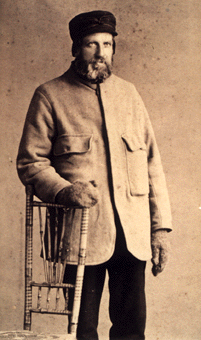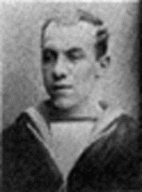|
|
|
Updated 7th May 2004
email : [email protected]
Stephen married Mary Ann Tutt and they lived at Zulu Cottages Sellindge. He was an agricultural engine driver working for his father. Two daughters were born Ellen and Lydia. About 1882/3 Stephen decided to leave his fathers farm and set up a small farm of his own. Old Richard Henry was so upset by this that he gave him a cow and told him that this was his share of his inheritance and not to expect anything else. Stephen and Mary moved to Broad Street Monks Horton. where they had a small house ( on the left approaching the church) with a large garden, orchard and 3 fields. Besides the cow they had a donkey, pigs, chicken and a few sheep. They suffered a bad fire in 1894/95 when all the outbuildings were destroyed. Having added to their family with another six boys and three girls it was decided to move to Cheriton where they found a house in Ashley Avenue. Stephen worked as an engineer at a hotel in Folkestone, we think on the boilers.
He emigrated to Canada with sons John (Jack) and Joseph (Joe), with the idea that they would work and save enough money to enable the rest of the family to join them. It is believed that this was under a scheme where land was given on the condition that it was worked for 6 months of the year.
|
|
Photograph of Stephen Castle BIRCH taken in Canada. Note the mittens on his hands, it must have been too cold to take off the gloves for the camera. |
They all worked at the saw mill in Beaudette Minnesota just over the border in USA. After the tragedy Jack went away we think to Winnipeg looking for work and all contact was lost. The last contact the family have with him is a postcard sent from Rainy River, showing the station.
Nobody ever discovered what happened to him, despite Joe looking for him and later Robert Birch (Bob ) one of his brothers employing a private investigator to look for him.
Source Memories of Mary Elizabeth Birch - Patricia Searle
Though being born Patrick Roche at Drogheda Ireland on 14th March 1878, he used the name of John Patrick Roche in later life. It is believed that Patrick, was brought up by an aunt and uncle following the death of his parents. His army pay book shows reference to being employed as a Miner before joining the Army. Patrick left Ireland age 14 on a cattle boat bound for Stirling Scotland, where he enlisted in the Royal Scots as a Band Boy. Stirling was a Royal Scotts Depot at the time. Served in India and Burma until the regiment returned to the UK. Much of his time seems to have been involved with signals. Served in C Company 2nd battalion Royal Scots continuously for 22 years. He was discharged in 1917 with the rank of CSM, as the result the loss of and arm and other serious injuries. He lost his arm as a result of shrapnel wound received at the battle of St Eloi France. Amongst his medals were the Long Service Medal and Good Conduct awards. His army pay book and medals can be seen at the regimental museum at Edinburgh Castle. Performed the role of the Folkestone Leas Policeman in the 1920's. He volunteered again in 1939 and during the Second World War was employed at Egham and Broadstairs food offices, retiring from the latter in July 1948. On his death the cortege was draped with the Union Jack, and at his own request, his Glengarry cap, which he wore through the First World War, was buried with him.
He never made contact with family in Ireland, despite one letter sent by a nephew Christopher Roche, who worked at the chemical factory in Drogheda. The letter referred to the gift of a knife and ball in his younger days, when he was believed to be in an orphanage.
Source - Pat Searle - Memories Maurice Roche - Newspaper cuttings
|
|
John Patrick Roche Born 14th March 1878 |
Charles Frederick Birch 1873 to 1909 (son Richard Henry BIRCH)
Folkestone Hythe,Sangate & Cheriton Herald Feb 13th 1909 Fatal Cycling Accident
An inquiry was held at Ashford Police Station last Saturday concerning the death of Charles Frederick Birch aged 32 years. Who died at the Ashford Cottage Hospital to which institution he was removed after a cycling accident at Westenhanger. According to the evidence, the deceased was descending a hill up which one of Messers Mackenson's carts was being driven by Alfred John Andrews. In endeavouring to avoid the vehicle he fell from his machine and received severe injuries to his liver, from which he succumbed. A verdict of Accidental Death was returned.
Percy George Birch 1894 to ? (son Castle Birch)
He served in C coy 2 bat Royal Scots. Another family member Patrick Roche recommended he enlist in the Royal Scots where he was CSM. He is buried in plot 3 row C grave 22 in Coudry, British Cemetery France. Caudry is a large village 10Km east of Cambrai and on the south side of the village and a little south of the secondary road junction Caudry to Audencourt. He was reported missing to begin with. Then 8 years after the war finished his mother was informed that his body had been found when French people were cultivating ground on the edge of a wood. A mass grave was uncovered. His pay book was well preserved in his clothing and used as identification. All the bodies were re-interned in the above cemetery.
William Henry Stanford 1870 to 1900 (son Thomas Stanford)
Served in Indian Army. Stayed extra time due to a campaign and then went to the reserve. Served as a Policeman. Reinlisted at start of Boer War with 2nd Batt Buffs. Killed in action on 10/3/1900 in the battle of Driefontein and buried in a mass grave on the adjoining farm of Boschrand where there is no memorial. As Private Stanford 3370 he achieved The Queens South Africa Medal with 3 clasps Relief of Kimberly ,Paardeberg and Driefontein
Writer - Michael ROCHE

